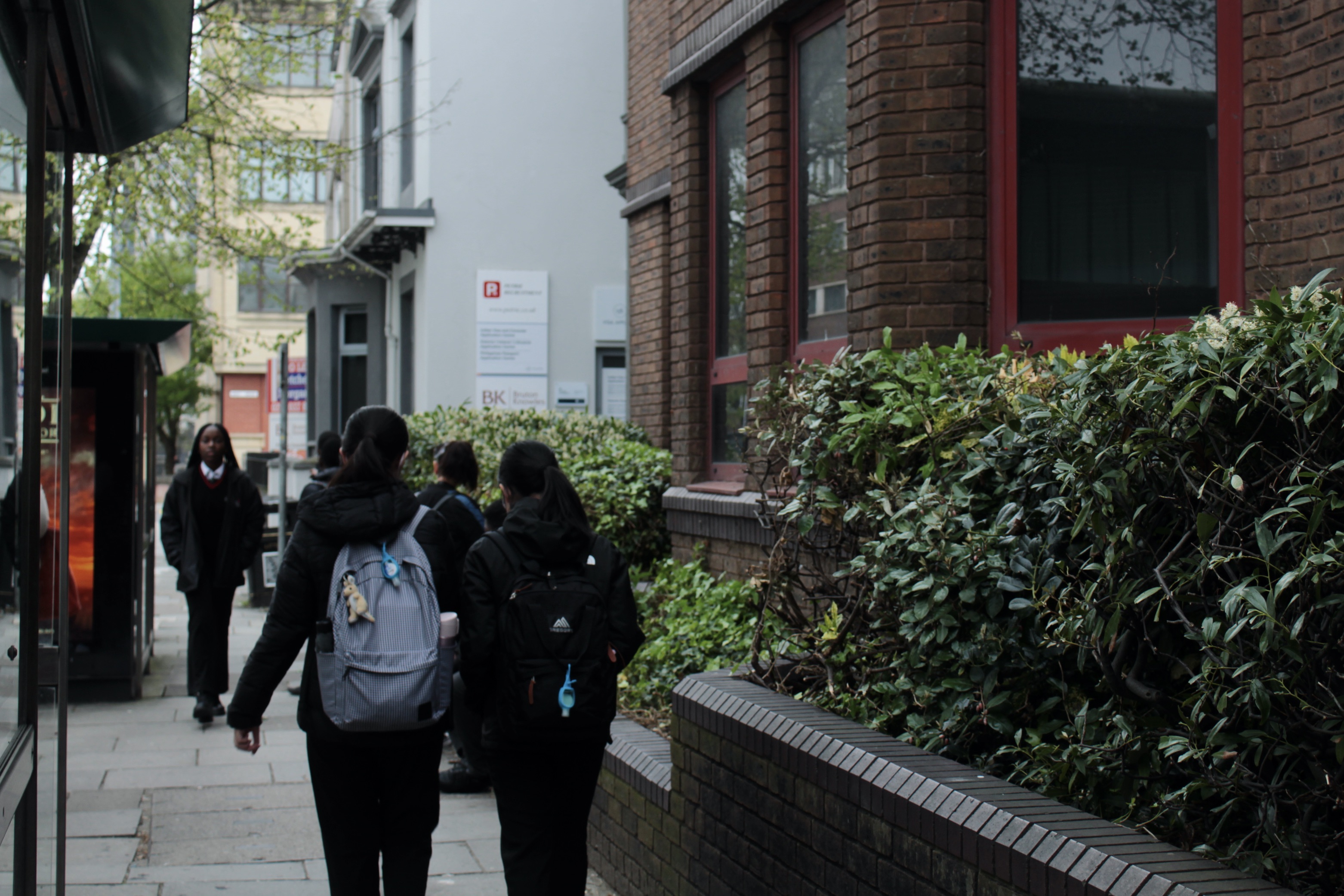
“I Just Gave Up.” FE Students Struggle With Cost Of Living Despite EMA Uplift
Following a campaign by the National Union of Students, Welsh Government this week raised EMA to £40 per week. The allowance, aimed at aiding learners from lower income households, hadn’t gone up since being introduced in 2004.
But despite the increase, the grants will still leave the poorest students struggling and unable to access them, as Oojal Kour found out.
By Oojal Kour. Cover image by Oojal Kour
The moment Diamond, not her real name, enters her college canteen, she is hit with a sense of dread and anxiety. She hastens to open her bag, finds her lunch box sitting idly in between her books, and sighs, relieved.
The thought of forgetting to pack lunch from home worries her to great lengths, because then she’d have to rely on the tiny, overpriced £5 sandwiches in the college canteen.
Diamond arrived in the UK as a refugee from Iraq and is now a British citizen. She relies on educational funding from the Welsh Government and is a Universal Credit claimant, but she still has to worry about muddling along daily.
With the low income she’s on, Diamond could apply for the Education Maintenance Allowance [EMA], a weekly grant which until this week, has stood at just £30 for the past twenty years.
But while she is eligible for the EMA, Diamond says that the hassle of the application process has pushed her away. “I didn’t apply for the grant because it was so complicated. I just gave up.”
Among other things, the EMA application requires students to sign an agreement with the school or college, which details the attendance criteria they must meet. Only when the college confirms that the student has been in attendance 90 percent of the time can they receive the funding every two weeks.
Diamond had to go back and forth with the grant application in order to obtain proof of her attendance. Even though her college records showed that she attended lectures at least 90 per cent of the time, it wasn’t enough for her to be considered. “How do you want me to get more proof? It’s like cat and mouse trying to prove it,” she says in exasperation.
The turmoil of involving herself in the application system took a toll on her. “Your dignity is the lowest of the lowest at that point. It’s like you’re bugging them, ‘Please give me the money.’ You feel embarrassed when you go and ask for help, so you don’t feel it’s your right,” she says.
Alarmingly, this process which people as young as 16 have to go through has echoes of the punitive welfare system.
Up until this week, the EMA was a £30 allowance and hadn’t risen since 2004, which National Union of Students (NUS) Wales says was “longer than anyone who actually receives EMA has been alive.”
But on Monday, after a campaign by the NUS, Education Minister Jeremy Miles announced a £10 uplift to the grants, bringing it to £40 a week.
Still, Diamond feels that the Welsh Government needs to consider whether students can eat healthy food and concentrate on their studies simultaneously with this amount of money.
She says, “It (EMA) doesn’t help all the way. You can live on it for only two or three days minimum, unless you live on an unhealthy diet. You’re studying, you need nutritious food to go on with your studies. You can’t live on toast and beans.”
Jamil Ahmad, Student Union President of Gower College, recalls his experiences of using the EMA a couple of years ago. He says he was lucky that his older brother also studied the same A Level subject that he did, making it easier to share books and reduce the cost of course materials. However, he feels that everyone’s in a different situation.
He says, “In today’s world, it has gotten a lot more expensive to get by. We live in an age where a bottle of Pepsi is cheaper than a bottle of water. So that’s not only going to cause a financial crisis, that’s also going to cause a health crisis for young people. It’s a whole lot of a mess.”
Speaking ahead of the uplift, Orla Tarn, President of the National Union of Students (NUS) Wales — representing students in higher and further education in Wales — said the grant is no longer fit for purpose, especially against a backdrop of a cost of living crisis and inflation.
“People are unable to travel to their campuses, they can’t afford to buy books and equipment to fulfil their learning and reach their potential,” they told voice.wales. “Students are in education because they want an education, and anything that falls in the way of them getting that is a barrier. At the moment, there seem to be so many barriers that students aren’t thriving at all.”
Diamond expresses concern towards her classmates, who survive with the help of EMA. “Even if you get the grant, it’s not a lifesaver,” she says.
Diamond has also witnessed an alarming number of students who aren’t even aware of the grant. According to her, most people don’t know they are eligible for it, and even when they receive the EMA application from college, they think it’s just another leaflet and end up either ignoring it or throwing it in the bin.
A lack of awareness surrounding this grant has affected those students who need it the most. According to figures from the Welsh Government, the number of students who claim the EMA has dropped considerably in the last few years. While around 24,030 students were EMA users in 2016/17, the number fell to 17,035 in 2021/22.
Orla attributes this decline to a rigid household income threshold — which is anything below £20,817 for a sole dependent, or less than £23,077 for more than one dependent child, including the student. The threshold hasn’t changed in years, resulting in fewer students meeting the eligibility criteria year after year.
Not only do lesser students partake in this funding, but even those who do are left with nothing at the end of the week. Diamond recalls lending a couple of quid to her peers so they didn’t go hungry through the day.
She says, “Sometimes I give them money to buy some food because they are hungry and have no money, because they spent it all. They don’t have even £1 to buy chips or potatoes for lunch. It’s this severe.”
Typically, those eligible for EMA will be between 16 – 18 years old and from the poorest households. If they do have a job, those under the age of 18 will only be entitled to a minimum wage of £5.28 an hour, less than half the rate recommended by the Living Wage Foundation.
As a result, many are relying on money from parents who are already seeing their incomes pressed to breaking point.
According to Jamil, the current situation facing FE students is a combination of several unfavourable circumstances — he mentions the pandemic, the war in Ukraine and the cost of living crisis. “Everything has mushed up to be a perfect storm. The general consensus is that students need support,” he says.
The EMA was introduced by the last Labour government in Westminster and was abolished in England under the Tory-Lib Dem coalition in 2010 as part of budget cuts. While the scheme continues in Wales and Scotland, students should be receiving at least £54 per week today, according to Luke Fletcher, MS of Plaid Cymru.
Luke wrote in an article for Morning Star saying, “This means that successive Welsh governments have cut the real-terms value of EMA by a third over the last 15 or so years.”
While the £10 uplift will be implemented this April, it does little to help students tackle the hurdles that still lay in front of them and to stop young learners from being priced out of their education.
Orla believes that there is still lots of work to do to address what the NUS have dubbed the cost-of-learning crisis that is forcing young learners to choose between attending classes and paying for food. They say, “Any review of EMA should be grounded in how best to equip further education students to reach their full potential in our education system…”


